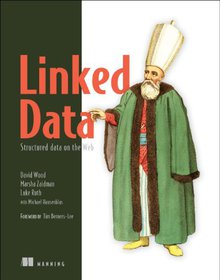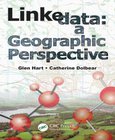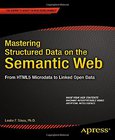Linked Data

Book Details:
| Publisher: | Manning Publications |
| Series: | Manning |
| Author: | David Wood |
| Edition: | 1 |
| ISBN-10: | 1617290394 |
| ISBN-13: | 9781617290398 |
| Pages: | 336 |
| Published: | Jan 24 2014 |
| Posted: | Nov 19 2014 |
| Language: | English |
| Book format: | |
| Book size: | 16.33 MB |
Book Description:
Summary Linked Data presents the Linked Data model in plain, jargon-free language to Web developers. Avoiding the overly academic terminology of the Semantic Web, this new book presents practical techniques, using everyday tools like JavaScript and Python. About this Book The current Web is mostly a collection of linked documents useful for human consumption. The evolving Web includes data collections that may be identified and linked so that they can be consumed by automated processes. The W3C approach to this is Linked Data and it is already used by Google, Facebook, IBM, Oracle, and government agencies worldwide. Linked Data presents practical techniques for using Linked Data on the Web via familiar tools like JavaScript and Python. You'll work step-by-step through examples of increasing complexity as you explore foundational concepts such as HTTP URIs, the Resource Description Framework (RDF), and the SPARQL query language. Then you'll use various Linked Data document formats to create powerful Web applications and mashups. Written to be immediately useful to Web developers, this book requires no previous exposure to Linked Data or Semantic Web technologies. Purchase of the print book includes a free eBook in PDF, Kindle, and ePub formats from Manning Publications. What's InsideFinding and consuming Linked Data Using Linked Data in your applications Building Linked Data applications using standard Web techniquesAbout the Authors David Wood is co-chair of the W3C's RDF Working Group. Marsha Zaidman served as CS chair at University of Mary Washington. Luke Ruth is a Linked Data developer on the Callimachus Project. Michael Hausenblas led the Linked Data Research Centre. Table of ContentsPART 1 THE LINKED DATA WEB Introducing Linked Data RDF: the data model for LinkedConsuming Linked DataPART 2 TAMING LINKED DATACreating Linked Data withSPARQL-querying the LinkedPART 3 LINKED DATA IN THE WILDEnhancing results from searchRDF database fundamentalsDatasetsPART 4 PULLING IT ALL TOGETHERCallimachus: a Linked DataPublishing Linked Data-a recap The evolving Web
Download Link:
Related Books:
Linked Data
A Geographic Perspective
Geographic Information has an important role to play in linking and combining datasets through shared location, but the potential is still far from fully realized because the data is not well organized and the technology to aid this process has not been available. Developments in the Semantic Web and Linked Data, however, are making it possible to integrate data based on Geographic Information in a way that is more accessible to users. Drawing on the industry experience of a geographer and a computer scientist, Linked Data: A Geographic Perspective is a practical guide to implementing Geographic Information as Linked Data. Combine Geographic Information from Multiple Sources Using Linked Data After an introduction to the building blocks of Geographic...
Linked Data Management
Linked Data Management presents techniques for querying and managing Linked Data that is available on todays Web. The book shows how the abundance of Linked Data can serve as fertile ground for research and commercial applications. The text focuses on aspects of managing large-scale collections of Linked Data. It offers a detailed introduction to Linked Data and related standards, including the main principles distinguishing Linked Data from standard database technology. Chapters also describe how to generate links between datasets and explain the overall architecture of data integration systems based on Linked Data. A large part of the text is devoted to query processing in different setups. After presenting methods to publish relational data as ...
Mastering Structured Data on the Semantic Web
From HTML5 Microdata to Linked Open Data
A major limitation of conventional web sites is their unorganized and isolated contents, which is created mainly for human consumption. This limitation can be addressed by organizing and publishing data, using powerful formats that add structure and meaning to the content of web pages and link related data to one another. Computers can "understand" such data better, which can be useful for task automation. The web sites that provide semantics (meaning) to software agents form the Semantic Web, the Artificial Intelligence extension of the World Wide Web. In contrast to the conventional Web (the "Web of Documents"), the Semantic Web includes the "Web of Data", which connects "things" (representing real-world huma...
2007 - 2021 © eBooks-IT.org



